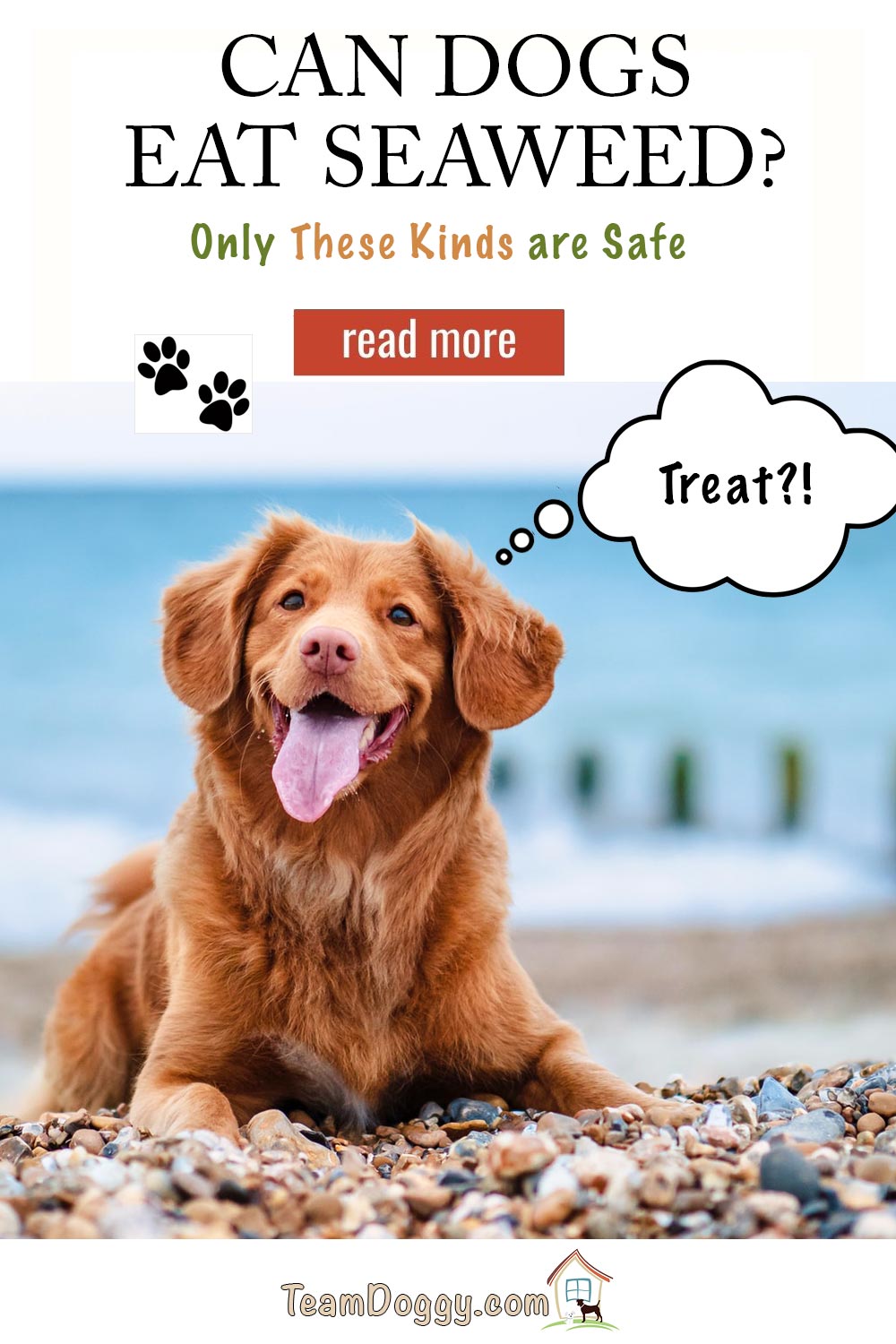
Can Dogs Eat Nori & Other Kinds of Seaweed? Wild or Store Bought Makes all the Difference
If you are wondering if your dog can eat seaweed the answer depends on a few factors. In short, store bought seaweed sheets are perfectly safe for dogs to eat. (With the caveat that they do not contain garlic or onion which is toxic to dogs)
Even though seaweed is safe for dogs to eat that doesn’t mean you can forage for your own beach seaweed and let your dog go to town on a sushi buffet.
Let me explain.
Let’s dig into a little back story. We recently got back from a trip to Guadeloupe. A charming chain of islands in the Caribbean (actually a French territory, where everyone speaks primarily French) – even the dogs.
The beaches were beautiful, the people were friendly… and the seaweed was stinky. At least on one side of the island. We happened to visit during “stinky beach season.” I guess it’s really a thing.
Another unique thing about Guadeloupe is that quite a few feral dogs and cats roam the beaches, the restaurants, and even our VRBO (our girls had a fun time bonding with a black lab and a cute calico cat they named tequila sunscreen that temporarily adopted us.
Let’s jump back to the stinky seaweed for a moment.
If something stinks it’s most likely filled with bacteria, toxins, and potentially even micro plastics that just aren’t safe for dogs to eat. (or pleasant for people to smell)
This is one instance where dogs should not eat seaweed. Even non-stinky beach seaweed could contain pollutants, bacteria, and even a stray jelly fish that would be bad for their tummy. And according to veterinarians we consulted on the topic seaweed can even expand in dogs’ stomach and cause intestinal problems galore.
Does Seaweed Have Nutritional Value for Dogs?
In other words is seaweed good for dogs? In fact, it is. Just like for us two legged mammals seaweed is rich with wonderful nutrients, and is quite good for us, and them. As long as it’s harvested using a clean safe process like the Nori seaweed sheets you find at the store you and your dog are good to go.
The nutritional benefits of seaweeds like kelp for dogs include rich sources of omega-3 fatty acids, iron, iodine, and magnesium, and a whole bunch of other crucial vitamins, minerals, and nutrients. All of which help give you dog a shiny healthy coat and skin.
Iodine is a key component of seaweed that improves thyroid functions. Because iodine is not created in our, or our dogs’ bodies – it has to come from the diet. Thus the trace amounts of iodine found in seaweed or seaweed powder is very beneficial to canine and human health.
Seaweed and kelp also contains a whole basket full of vitamins and minerals that do a body good, including: Vitamin A, B1, B2, C, E, K, Calcium, Folate, Potassium, Manganese, and Copper.
Unless you are sure the seaweed is clean and pollutant free a better alternative is powdered kelp supplements which can easily be added to food to give them a clean healthy source of these beneficial nutrients.
Types of Seaweed That Are Good for Dogs
There are many different types of seaweed (over 10,000 if you can believe it!) and depending on the location they are sourced from they each have slightly different health benefits.
Red seaweed, Rhodophyta, or more accurately red algae makes up around 6,500 of those 10,000 varieties of seaweed. Popular edible red seaweed includes Dulce, Carrageen Moss, and of course Nori.
Green seaweed, or Chlorophyta, is rich in chlorophyll which gives it it’s green color. Green seaweed is mostly a freshwater algae. The predominant edible form is Chlorella and Sea Lettuce. Chlorella is often found in a powder or supplement tablet form that can be added to human or canine food to spruce up a healthy diet.
Blue-green and brown seaweed (Phaeophyceae) is widely known as kelp. Being the longest growing form of brown seaweed kelp reaches lengths up to seventy meters long. Kelp is a rich food source for seaweed lovers around the world. Kombu and Wakame are popular forms of food grade kelp made primarily in Japan, Korea and China.
What Happens if Dogs Eat Too Much Seaweed?
The problem with wild beach seaweed is that it dries up in the sun. As it does it shrinks, much like store bought dried Nori sheets. Imagine if your dog ate a whole tummy full of dehydrated beach seaweed.
As it becomes re-hydrated in his tummy it expands. This can be very dangerous for the dog since there is no room for the seaweed to go. As it becomes lodged in the digestive system it can cause a rupture. When the stomach or intestines rupture they release toxic digestive fluids and bacteria into the rest of the body.
That was nearly the case with five-year-old Lola, a black lab who absolutely loves the beach, and unfortunately for her, this time, loves to forage.
Lola could have had serious repercussions from her seaweed adventure but fortunately for her after a rush to the vet, an intravenous drip, some anti-vomiting medicine, and treatment for low potassium and dehydration she pulled through.
Making sure you give your dog the right kind of seaweed makes all the difference between a happy healthy dog and a day at the vet you and she would rather avoid.










